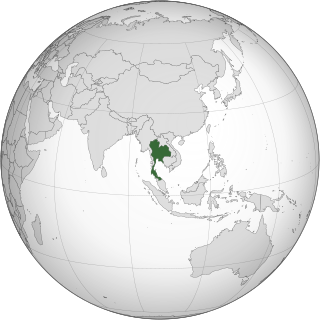Related Research Articles

E.164 is an international standard, titled The international public telecommunication numbering plan, that defines a numbering plan for the worldwide public switched telephone network (PSTN) and some other data networks.
A toll-free telephone number or freephone number is a telephone number that is billed for all arriving calls. For the calling party, a call to a toll-free number from a landline is free of charge. A toll-free number is identified by a dialing prefix similar to an area code. The specific service access varies by country.
A telephone numbering plan is a type of numbering scheme used in telecommunication to assign telephone numbers to subscriber telephones or other telephony endpoints. Telephone numbers are the addresses of participants in a telephone network, reachable by a system of destination code routing. Telephone numbering plans are defined in each of the administrative regions of the public switched telephone network (PSTN) and in private telephone networks.

The French telephone numbering plan is used in Metropolitan France, French overseas departments and some overseas collectivities.
Telephone numbers in Japan consist of an area code, an exchange number, and a subscriber number.
International direct dialing (IDD) or international subscriber dialling (ISD) is placing an international telephone call, dialed directly by a telephone subscriber, rather than by a telephone operator. Subscriber dialing of international calls typically requires an international call prefix to be dialed before the country code.

The area code 868 is assigned to Trinidad and Tobago, a member of the North American Numbering Plan (NANP). The telephone numbering plan for the country is known as the National Numbering Plan. It is part of a system used for assigning telephone numbers in Trinidad and Tobago, and functions as a part of the North American Numbering Plan (NANP). It is regulated by the Telecommunications Authority of Trinidad and Tobago, which holds responsibility for telecommunications in the country.
Area code 246 is the telephone area code in the North American Numbering Plan (NANP) for Barbados. The sequence 246 spells BIM on an alpha-numeric telephone keypad, a nickname for the island.
The Brazilian telephone numbering plan uses a two-digit area code plus eight-digit local phone numbers for landlines and nine digits for mobile lines. Public utility services use short phone numbers, always starting with 1.
Telephone numbers in Switzerland are defined and assigned according to the Swiss telephone numbering plan administered by the Swiss Federal Office of Communications. The plan has been changed several times and the most recent reorganization was implemented in March 2002.
Telephone numbers in South Korea are organized and assigned using the following scheme
Telephone numbers in Oceania use a variety of area codes to denote their location along with their own area code depending on the country's geographic makeup. They also have other prefixes to denote different types of mobile services and international calls. There are exceptions because of regional variations and time zones.

In Sweden, the area codes are, including the leading 0, two, three or four digits long, with larger towns and cities having shorter area codes permitting a larger number of telephone numbers in the eight to ten digits used. Before the 1990s, ten-digit numbers were very rare, but they have become increasingly common because of the deregulation of telecommunications, the new 112 emergency number, and the creation of a single area code for the Greater Stockholm area. No subscriber number is shorter than five digits. The longest subscriber numbers have eight digits.

Telephone numbers in the Republic of China (Taiwan) use a system of area codes, beginning 02 to 08. The leading digit(s) following the area code denote the network operator (Chunghwa Telecom and its competitors). Mobile numbers begin 09. The international code for calls into Taiwan is 886.

Thailand's telephone numbering plan in Thailand is managed by the National Broadcasting and Telecommunications Commission (NBTC) in accordance with International Telecommunication Union's (ITU) recommendation E.164.

Telephone numbers in Russia are administered by Roskomnadzor, and Ministry of Digital Development, Communications and Mass Communications of the Russian Federation. Russia's National Numbering Plan (NNP) is a four-level telephone numbering plan with local, zone, country, and international scopes, implementing a closed numbering plan, in which the number of digits of all national significant numbers (NSN) assigned to subscriber telephones is fixed at ten, with three digits for the area code, and a seven-digit subscriber number which includes a zone code of up to two digits. Internationally, Russia participates in the numbering plans of the International Telecommunication Union (ITU) provided by recommendations E.164 and E.123, using the telephone country code 7.

Telephone numbers in Georgia consist of 9 digits and follow a closed numbering plan in which the initial 2 or 3 digits indicate the service or area code and the remaining 6 or 7 digits identify the subscriber.

Telephone numbers in Abkhazia follow the dialling plan in place in Russia.
References
- ↑ "International carrier access codes". Traficom. Retrieved 2022-07-11.